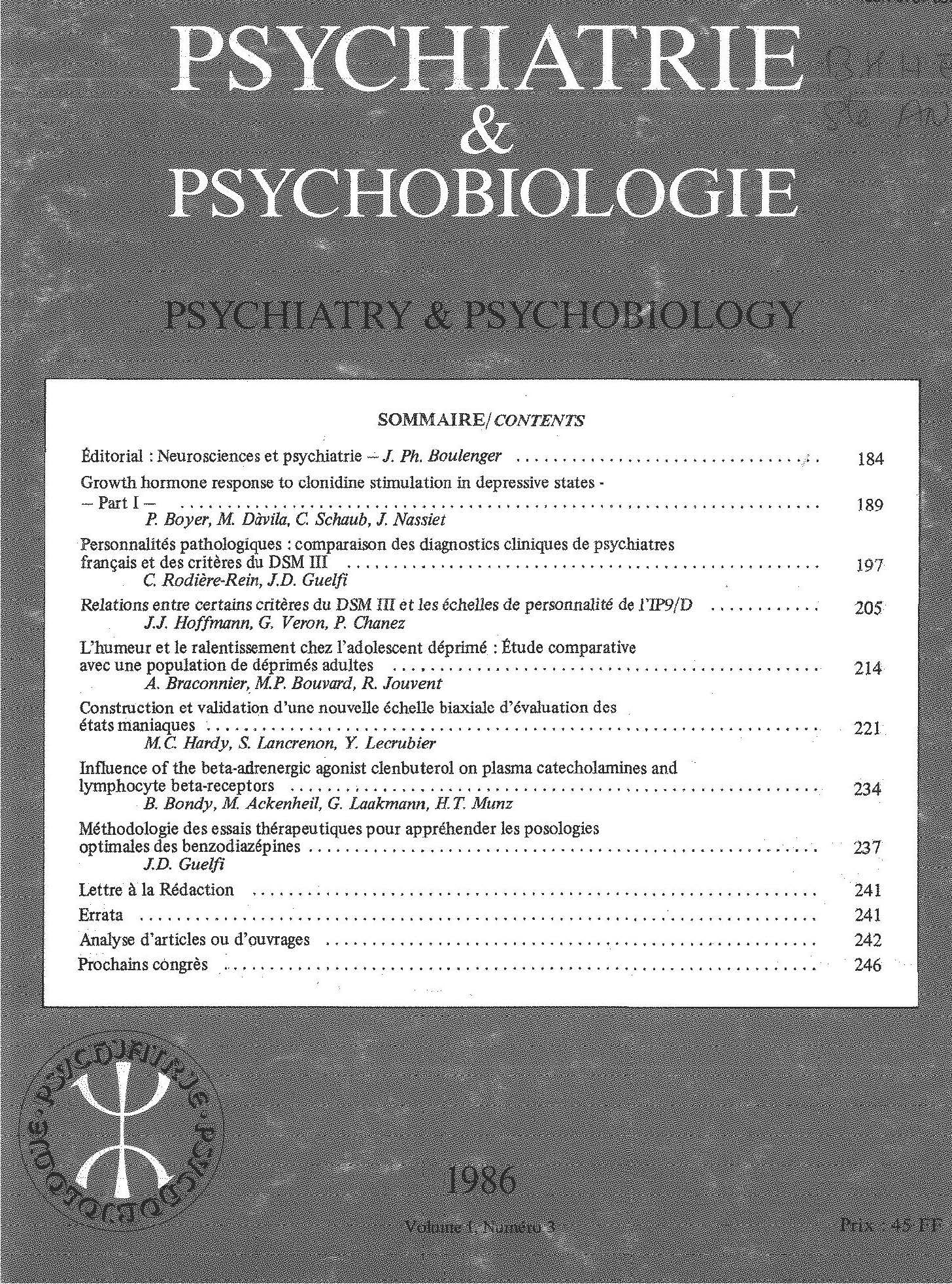Article contents
Nosological status of schizoaffective disorders: Theoretical models and empirical evidence
Published online by Cambridge University Press: 28 April 2020
Summary
The question of the nosological status of schizoaffective disorders remains one of the most controversial issues of clinical psychiatry. There are, in fact, at least five different hypotheses about the nature of these disorders: • that they are always variants of schizophrenia, • that they are always variants of major affective disorders, • that they represent a “third psychosis” distinct from both schizophrenia and manic-depressive illness, • that they find their place in the intermediate position of a “continuum” whose poles are represented by the typical forms of schizophrenia and manic-depressive illness, • that they result from the simultaneous occurrence of a true schizophrenia and a true manic-depressive illness in the same patient. The last of these hypotheses can hardly be accepted, since it would predict an annual frequency of schizoaffective disorders of about 2 per 108, compared to the actual frequency of 2 per 105. Of the remaining four hypotheses, the first two are consistent with the Kraepelinian “dichotomic” paradigm, whereas the third and the fourth contradict this paradigm. The results of empirical investigations (that is, of family studies, outcome studies and studies on response to drug treatments in schizoaffective patients) do not provide a full support to any of the above hypotheses. What empirical evidence seems to show, instead, is that schizoaffective disorders represent a heterogeneous group of syndromes. Part of these disorders can be interpreted, upon close scrutiny, as variants of either of the major psychoses (for instance, bipolar schizoaffective States appear to be closely allied to major affective disorders). There seems to be, however, a subpopulation of schizoaffective patients which escapes the Kraepelinian dichotomic model.
Résumé
Le problème du statut nosographique des troubles schizoaffectifs reste l’un des plus controversés de la psychiatrie clinique. Il existe, en effet, au moins cinq hypothèses différentes sur la nature de ces troubles: • ils représentent un type particulier de schizophrénie; • ils représentent une variante des troubles affectifs majeurs; • ils constituent une “troisième psychose”, distincte aussi bien de la schizophrénie que de la maladie maniaco-dépressive; • ils s'insèrent dans la position intermédiaire d'un “continuum” dont les extrêmes sont représentés par les formes typiques de schizophrénie et de maladie maniaco-dépressive; • ils résultent de la manifestation simultanée chez le même patient d’une véritable schizophrénie et d’une véritable maladie maniaco-dépressive. Il est bien difficile de soutenir cette dernière hypothèse qui laisserait prévoir une fréquence annuelle des troubles schizoaffectifs d’environ 2 × 108, alors que la fréquence observée de 2 × 105. Parmi les quatre hypothèses restantes les deux premières sont compatibles avec l’approche “dichotomique” Kraepelinienne, alors que la troisième et la quatrième sont en contraste avec cette approche. Les résultats des recherches empiriques (c’est-à-dire des études génétiques, des études sur l’évolution et des études sur la réponse aux traitements pharmacologiques chez les malades schizoaffectifs) ne confirment pleinement aucune des hypothèses précédentes. Les résultats empiriques sont au contraire en faveur de l’existence d'un groupe hétérogène d'états morbides constitués par les troubles schizoaffectifs. Après examen attentif, on peut inclure une partie de ces troubles dans l'une ou l'autre des psychoses majeures (par exemple les états schizoaffectifs bipolaires semblent équivaloir aux troubles affectifs majeurs). Il semble, toutefois, qu'il existe une sous-population de patients schizoaffectifs qui échappe au modèle dichotomique Kraepelinien.
Keywords
Information
- Type
- Research Article
- Information
- Copyright
- Copyright © European Psychiatric Association 1987
References
- 2
- Cited by


Comments
No Comments have been published for this article.